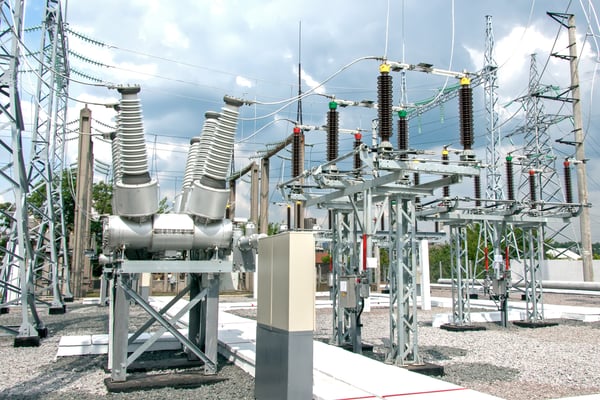Which Are the Advantages of Higher Voltage in Electrical Installations?

The standard voltage for power outlets changes throughout the world. While most countries in the Americas have a voltage of 110-127V, other continents use mostly 220-240V. However, this only applies for the residential and light commercial sectors. In large commercial and industrial buildings, electrical installations use even higher voltages such as 277/480V and 347/600V.
The instantaneous power delivered by an electrical circuit is the product of voltage and current. Assuming the load is kept constant, a higher supply voltage allows a lower current. When designing an electrical installation, the rated voltage selection involves a tradeoff between current and voltage - when one is increased, the other is lowered.
Make sure your electrical installation design is safe and efficient.
Benefits of Reducing Current in Electrical Circuits
Industrial processing machinery consumes significantly more power than home appliances and office equipment. If a low voltage such as 120V is used in this case, a very high current is required to deliver enough power.
- For example, a 900-watt home appliance only draws 7.5 amperes of current at 120V, but a 150-kW industrial machine would draw 1,250A at 120V.
- Such a high current requires very large conductors, wasting copper and making the installation much more expensive.
- On the other hand, a 600V power supply reduces the current to a much more manageable value of 250A.
- If the 150-kW equipment uses three-phase voltage, the rated current is reduced even further to 144A, while requiring an extra conductor.
Also consider that circuit breakers and other protections are sized based on current. For instance, a 1250A breaker is considerably more expensive than 250A breaker. Larger protection devices are also bulkier and heavier, which makes their installation more complex.
Current reductions not only save on wiring and electrical components - consider that losses in a conductor are proportional to the current squared. In other words, doubling the current increases heat losses by four, while 1/2 of the current cuts losses down to 1/4. In a large industrial site with thousands of feet of electrical circuits, the savings from reduced current can be significant.
Of course, there is a lower limit to how much the current can be reduced, since it involves a voltage increase. Higher voltage requires more insulation and additional protection measures for personnel. A conductor that carries 100A at 120V is much less threatening than one with 12A at 1000V, even if both are delivering 12 kilowatts.
Handling High Voltage Safely

A high-voltage installation requires two key elements to be safe: adequate insulation according to the voltage level, and physical isolation measures to prevent accidental contact. Of course, the installation must also meet the National Electrical Code and any local building codes that apply.
To ensure continuous safety, the insulation should be tested at regular intervals; damaged insulation increases the risk of an arc fault, threatening personnel and equipment. Also, insulation deteriorates faster when exposed to extreme temperatures and chemical agents. Testing is performed with a device called a megohmmeter, which applies a test voltage to insulation to measure its performance. The difference with a conventional multimeter is that the megohmmeter applies a much higher test voltage, which is suitable for high insulation levels.
Transmission and distribution lines use much higher voltages that homes and businesses, precisely because they need to carry large amounts of power. A low-voltage transmission line would be prohibitively expensive and very impractical, requiring many miles of large conductors.
- Voltage is stepped up at power plants to a suitable level for transmission, and then stepped down by substations for distribution.
- Pole transformers perform the final step down for residential and commercial use.
- Industrial users often step down the transmission voltage with their own substations, due to their high demand for electricity.
To achieve an installation that is both safe and efficient, the best recommendation is getting professional electrical engineering services from the start of the project. They can specify the most suitable voltage for every appliance and piece of equipment, with the corresponding electrical protections.
Final Recommendations
Electricity is the fastest and most efficient energy delivery method known by modern civilization, buts its capacity also makes it dangerous when not handled property. When designing electrical installations, increased voltage reduces current, which allows smaller conductors and protection devices. However, the design must also account for the risks of higher voltage with adequate insulation and protection measures, combined with regular testing.
Energy efficiency measures are strongly recommended, since they reduce the total power consumed by an electrical installation. For a given voltage, this allows smaller conductors and protection devices. For example, a high-bay HID lamp consumes over 450 watts, while an equivalent LED product typically consumes under 150W - a given circuit capacity can serve three times more lamps in this case if they are LED.

Michael Tobias
Michael Tobias, the Founding Principal of NY Engineers, currently leads a team of 150+ MEP/FP engineers and has led over 4,000 projects in the US
Join 15,000+ Fellow Architects and Contractors
Get expert engineering tips straight to your inbox. Subscribe to the NY Engineers Blog below.

